Cursed to Suffer
In which Norm finally gets his hands on THE DEAD ZONE, just in time to pair it with a new Blu-ray of THINNER. Dig that Stephen King synergy!
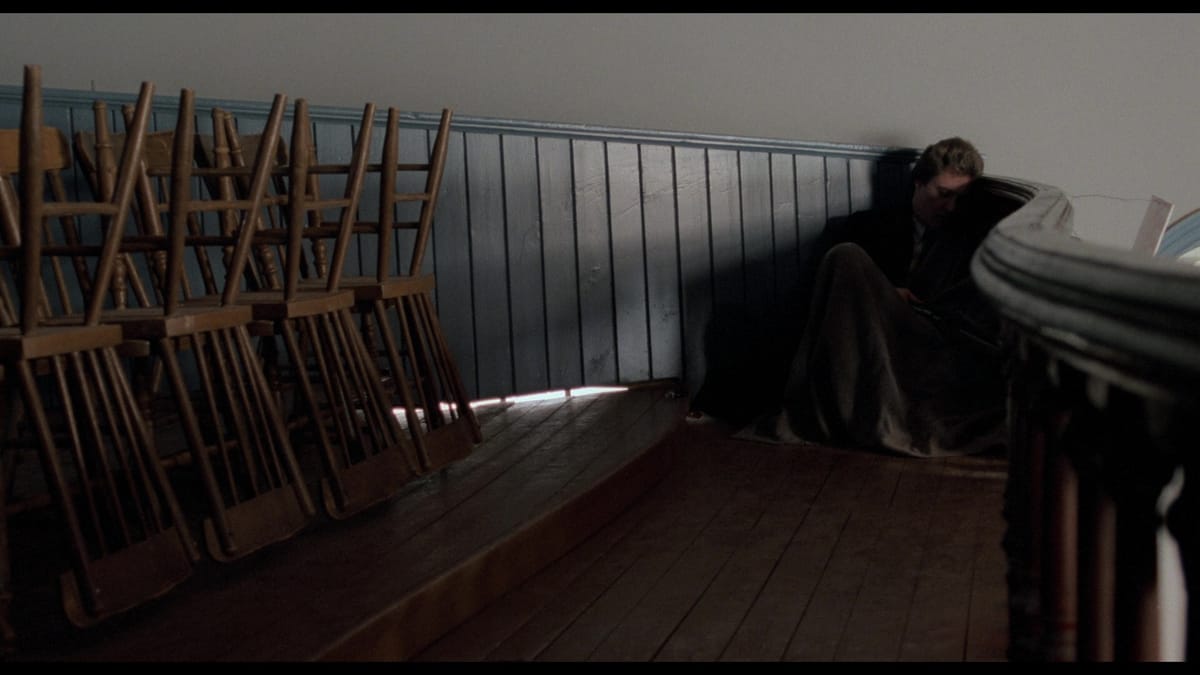
As most of you will recall, I wasn’t able to include Scream Factory’s new 4K release of The Dead Zone in last month’s look at flawed Stephen King adaptations because I never got the disc. Just as well, really, since there’s nothing about David Cronenberg’s movie that I could possibly consider flawed.
Anyway, I have no problem buying a Cronenberg movie; in fact, I had my brother-in-law mule over Arrow’s UK UHDs of Videodrome and Naked Lunch last month, both of which offer elements and extras that aren’t available on Criterion’s domestic editions. (I assume Criterion will give Naked Lunch a North American 4K update before too long, and eventually do the same for Crash, which Arrow released in an excellent UK edition a while back; I’m just a completist, I guess. Also there was a sale.)
So I picked up the 4K Dead Zone at Bay Street Video earlier this week, and it turns out Cronenberg’s wintry, fatalistic thriller pairs quite nicely with the Shout! Blu-ray of another King adaptation hitting shelves next week: Tom Holland’s adaptation of Thinner.
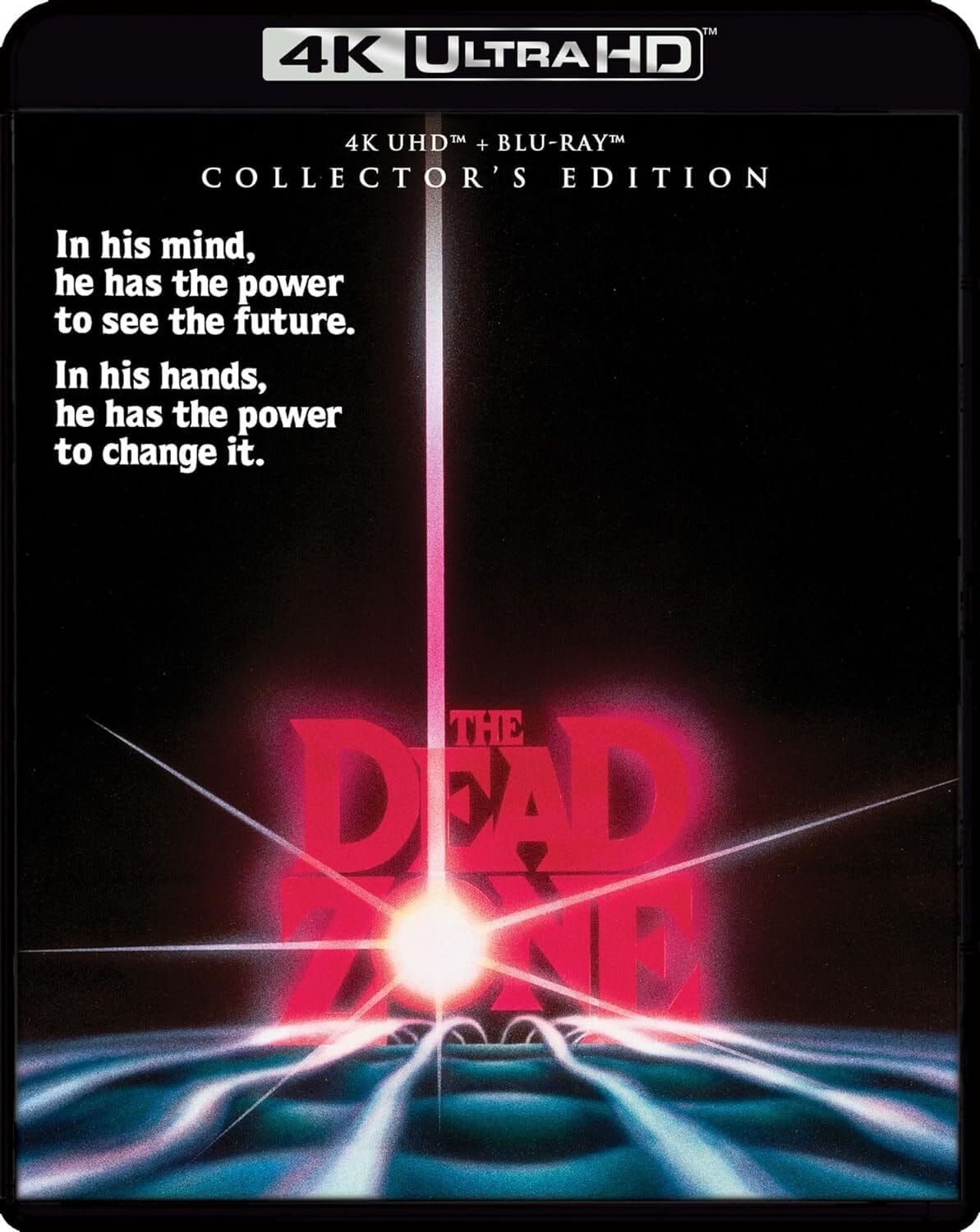
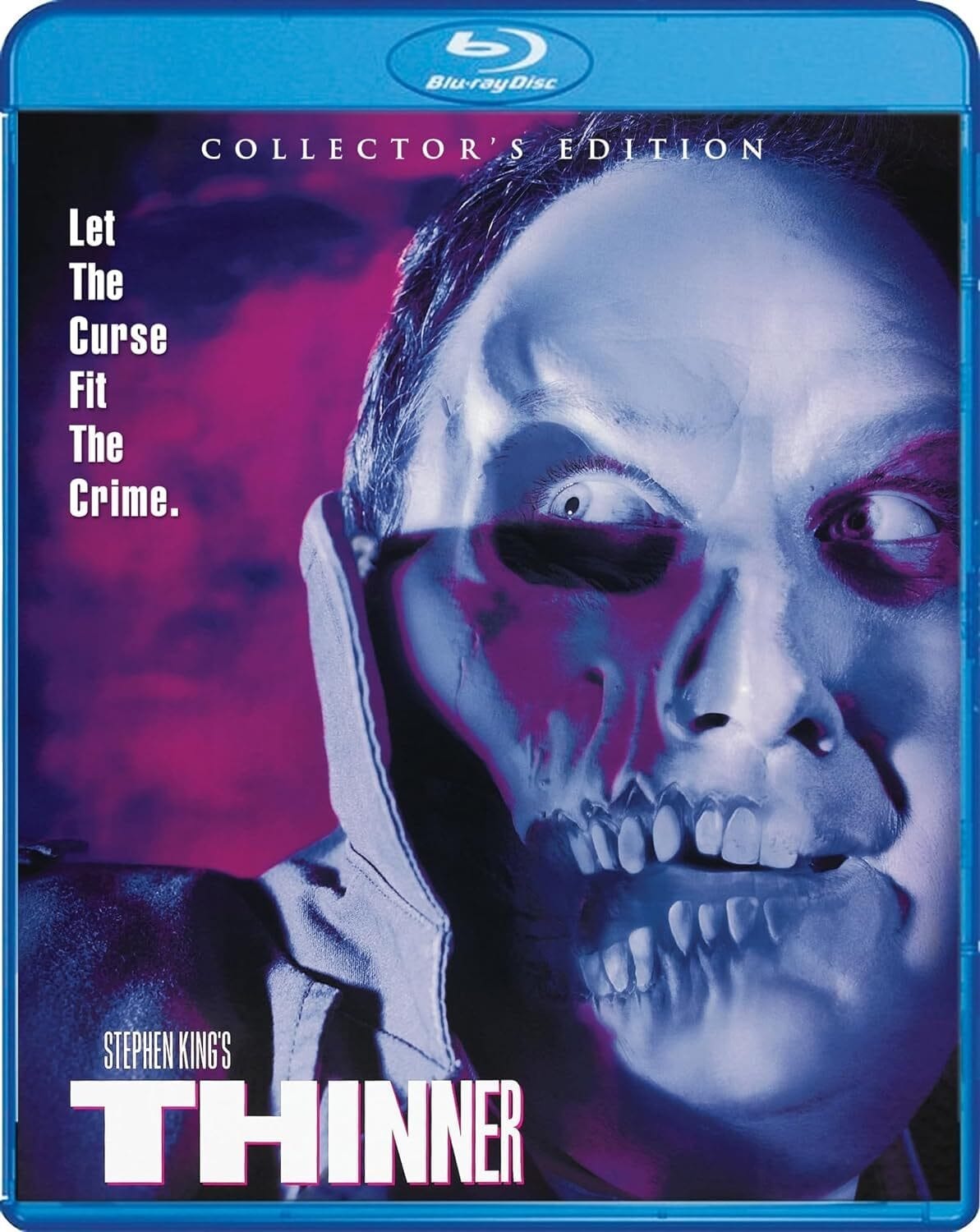
This is not to say that the films have equal standing, mind you. Holland’s picture is considerably broader and messier than Cronenberg’s, which now stands as maybe the most sophisticated and stately adaptation of any of King’s work. I know, I know, The Shining … but Kubrick took that one so far from King’s text that it doesn’t feel fair to classify it as an adaptation. It also totally loses its shit in the last two reels, as it must, while The Dead Zone’s sad, somber tone remains consistent to the very end, a meditation on destiny and duty and sacrifice that captures the tormented heart of the Johnny Smith who exists on the page.
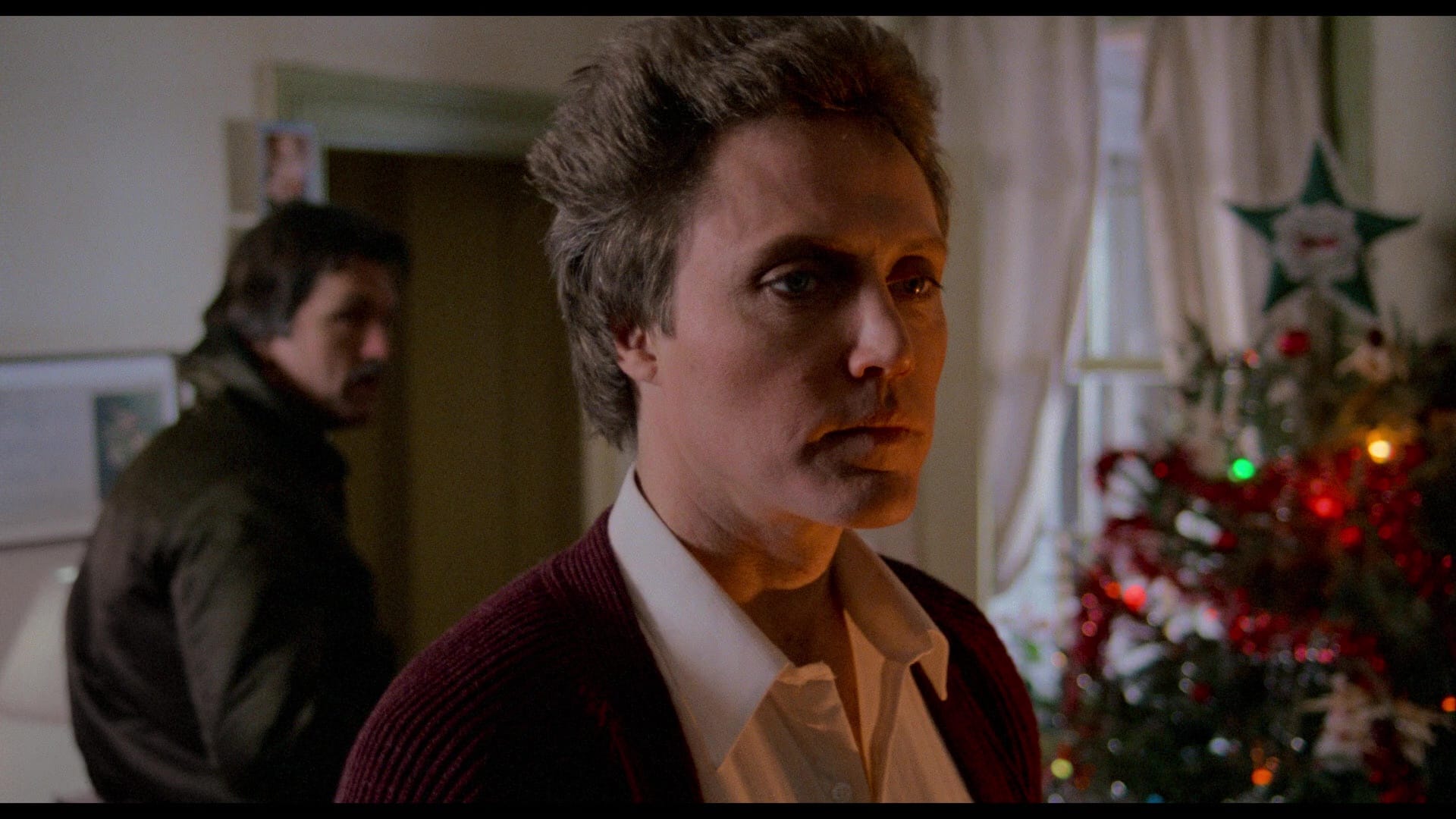
King once said the book began as an exercise in taking the perspective of an assassin – to see why a man might need to plan a political murder – but of course that’s not where The Dead Zone ended up. It’s a Cassandra story, with not even the slightest question as to whether Johnny might be unhinged rather than psychic. Johnny might doubt the accuracy of his visions, but the book and the film both show us that his actions can alter their outcomes – meaning he’s entirely justified in taking out glad-handing fascist Greg Stillson before the rising political star can get himself elected President and start World War III.
King also made sure we understand Stillson is a monster well before he crosses Johnny’s path, where Cronenberg frames him as less of a psychopath and more of an opportunistic fanatic, which is actually more unsettling – especially since Martin Sheen finds a chillingly direct way to communicate the man’s hollow charisma, turning his own natural magnetism off and on like a light switch. Any parallels to actual presidents are entirely coincidental, of course.
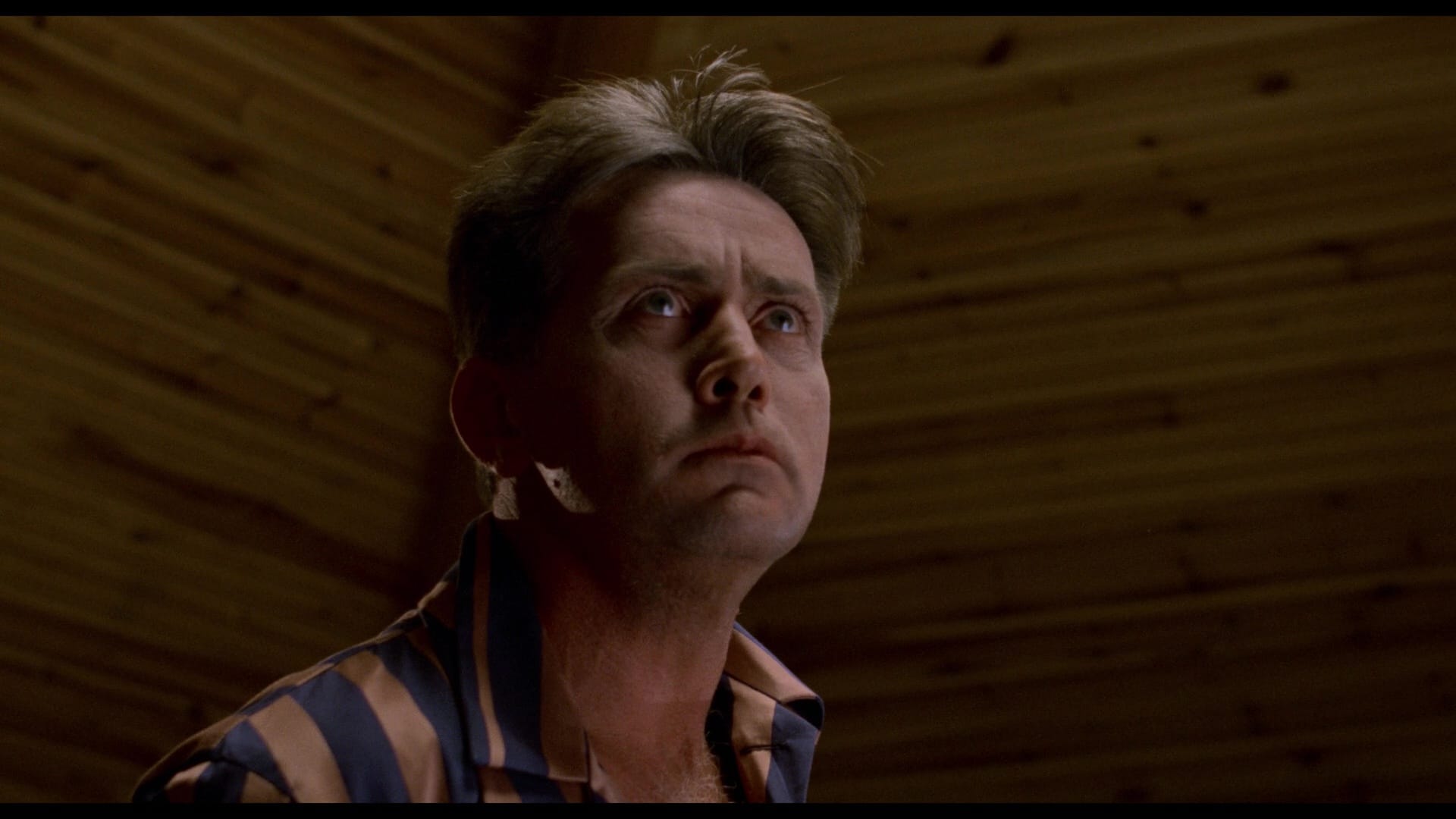
The Stillson story is the last chapter of a fairly episodic film, considerably streamlined from King’s book by screenwriter Jeffrey Boam – though Debra Hill told a story of locking herself, Boam and Cronenberg in a hotel room for two weeks to figure out the structure, and you can feel Cronenberg’s own efficiency as a writer in the opening sequence of the film, hurtling us into the future – and the main narrative – alongside his hero.
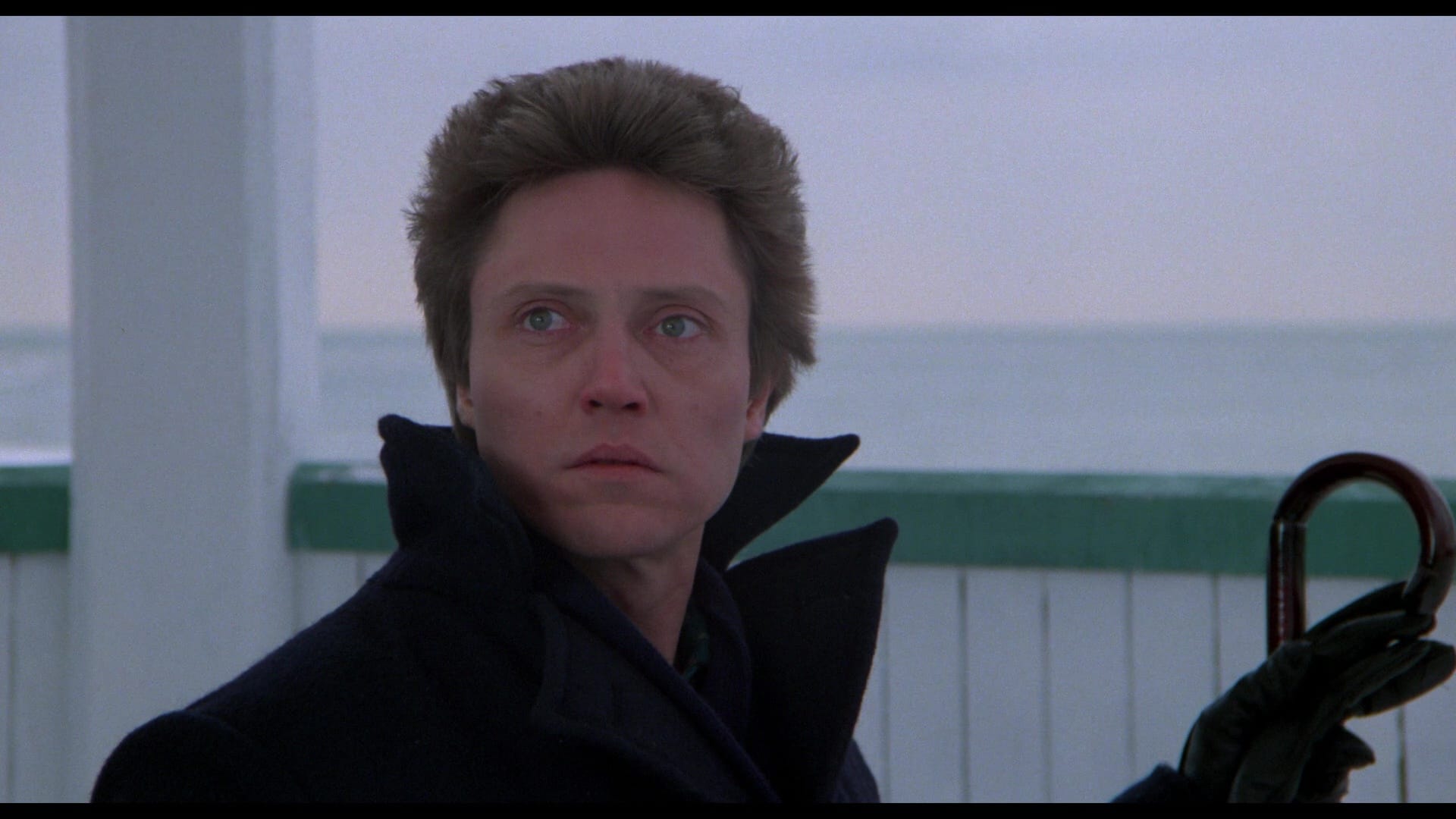
And is there anything I can say about Christopher Walken’s performance as John Smith that hasn’t already been said in the thirty years since the film opened? Walken doesn’t just carry the film, he sets its tone from the start, reading “The Raven” to a classroom with the cadence of the heartbreak that’s coming straight at Johnny like a freight train – or a milk truck – while still puncturing the heaviness of Poe’s text with a quick grin, establishing the dark streak of humor that becomes Johnny’s defense mechanism when he wakes from a five-year coma pining for his own lost love – Sarah, played with a palpable ache by Brooke Adams – and able to see the future of anyone he touches.
Walken’s idiosyncratic line readings and twitchy mannerisms had already become a trademark by the time Cronenberg cast him, but they’re totally organic to Johnny, and even appropriate to his situation; when Walken starts bellowing, it’s because Johnny’s gotten tired of not being listened to.
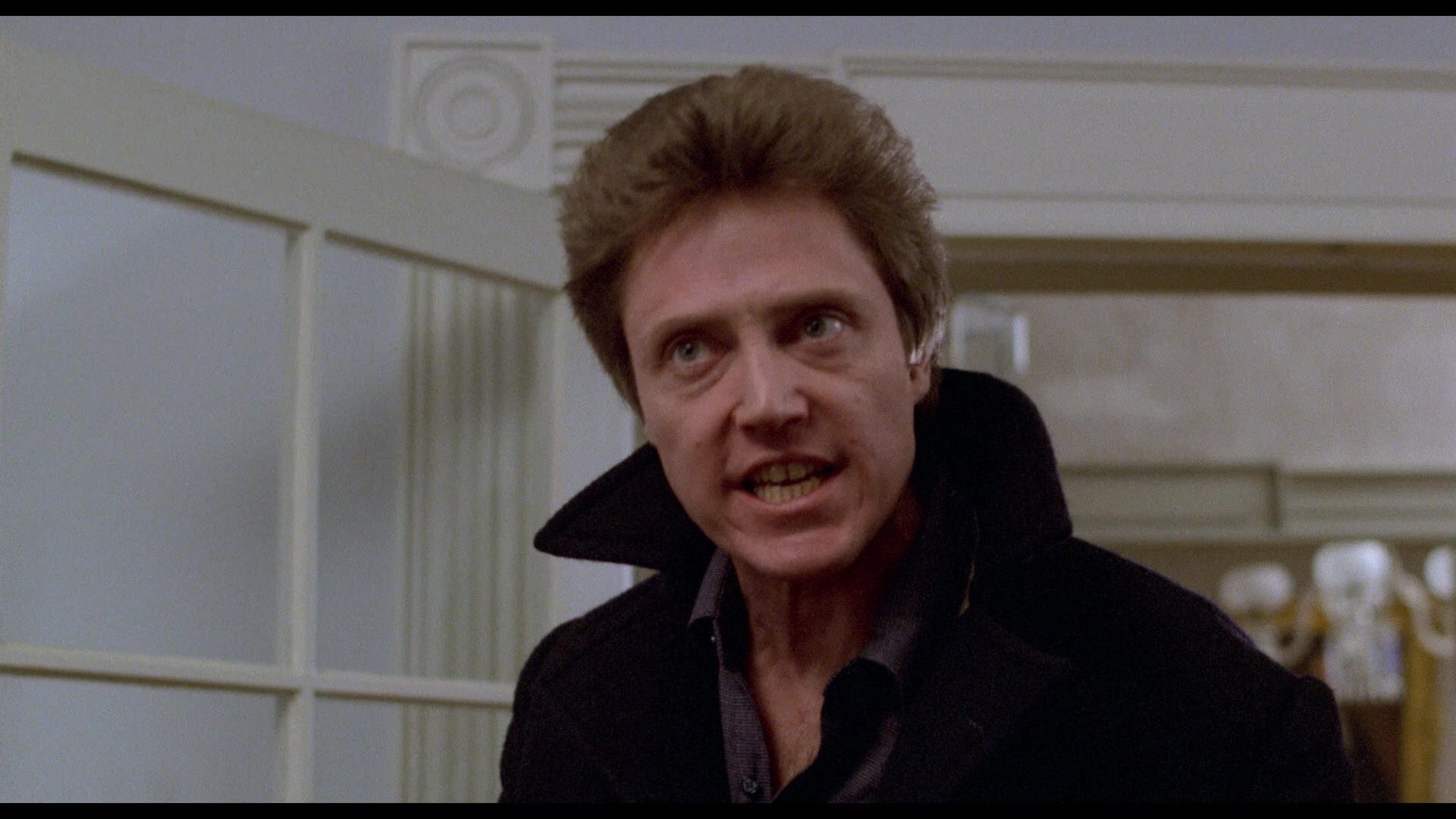
“The ice is gonna break” is a fun meme nowadays, but I saw The Dead Zone three times in the fall of 1983, with three different audiences, and every time that line landed, people gasped. He turns frustration into fury, and you can understand why Johnny scares away the people he saves; his ability is uncanny and incomprehensible, its burden unimaginable. Walken keeps that in his eyes for the whole movie. It’s the performance of his career.
I’ve long wondered why neither King nor Cronenberg lets Johnny see Sarah’s future when they touch – and they do touch, in one lovely, gentle moment before the story takes its darkest turn – but now I think Walken’s tender, pained performance explains it: On some level, Johnny won’t let himself see Sarah’s future. He knows he won’t be in it.
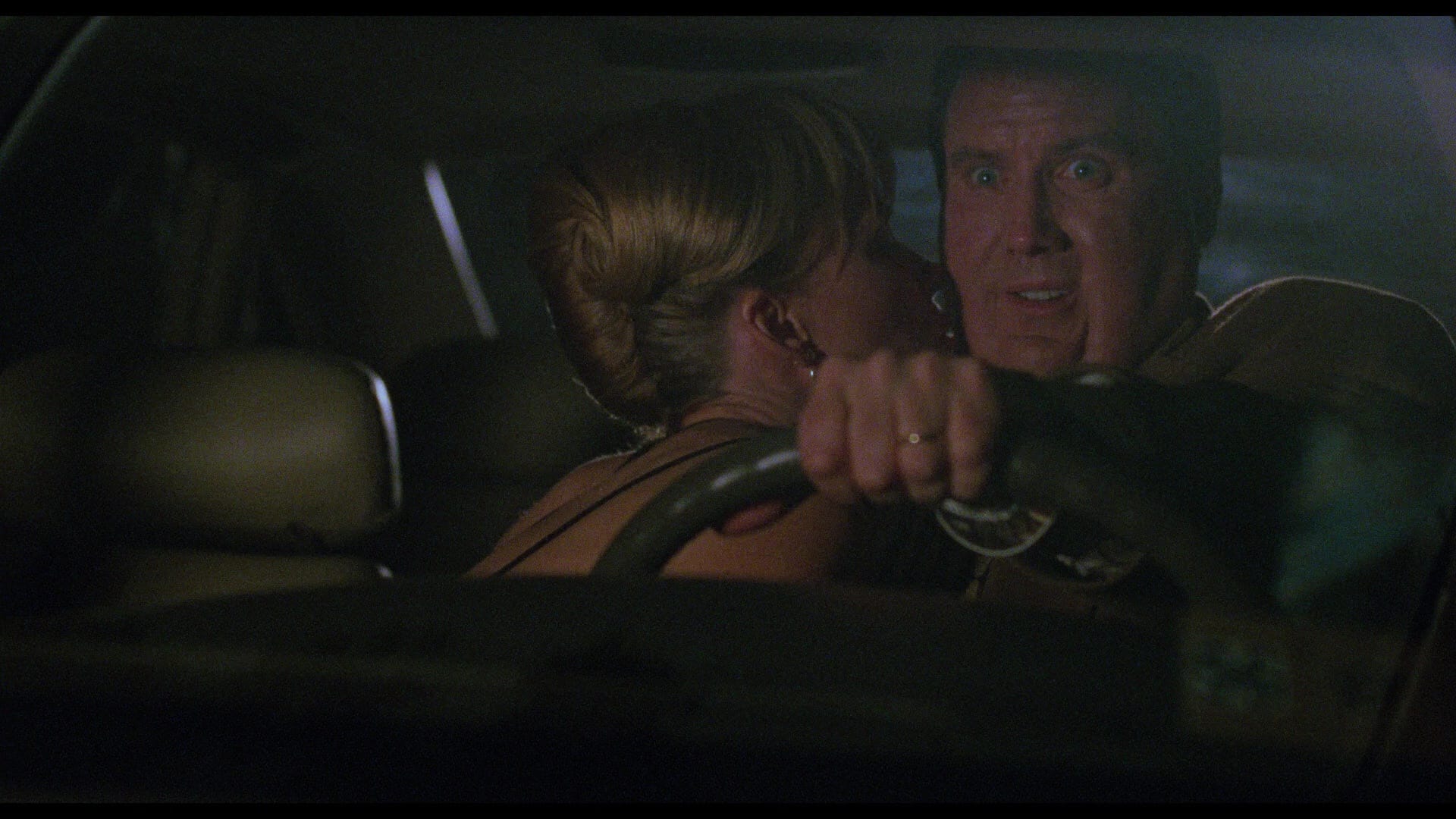
There’s no future for Billy Halleck either. The casually corrupt attorney at the center of Thinner is also laboring under a curse, though it’s one he invites, more or less, when he lets his pals in the justice system skate him through a manslaughter charge after he runs down a woman with his car one night. An innocent mistake, except that Billy’s wife (Lucinda Jenney) was being a little more distracting than he admitted to the authorities; it was a situation John Irving once handled very differently, if you get my drift. And if you don’t, writer-director Holland makes sure we understand exactly what was going on in the first of several elbow-in-the-ribs moments; it’s that kind of movie, oscillating between har-har humor and creeping dread. In fairness, King’s book works the same way, taking a very silly idea – what if a fat guy lost weight, but didn't want to? – and playing it out to its logical end.
The film version of Thinner loses the access to Billy’s inner monologue, so Robert John Burke really struggles to push some real emotion through the prosthetics; he’s a pretty distinctive guy, tall and lean, so he never really convinces as the 300-pound version of his character. There’s also the slight problem of the effect not being consistently convincing, either; there are far too many moments when the pieces don’t quite line up, and Burke looks like he’s wearing that fat suit like, well, a suit. (They never get the clavicle right.)
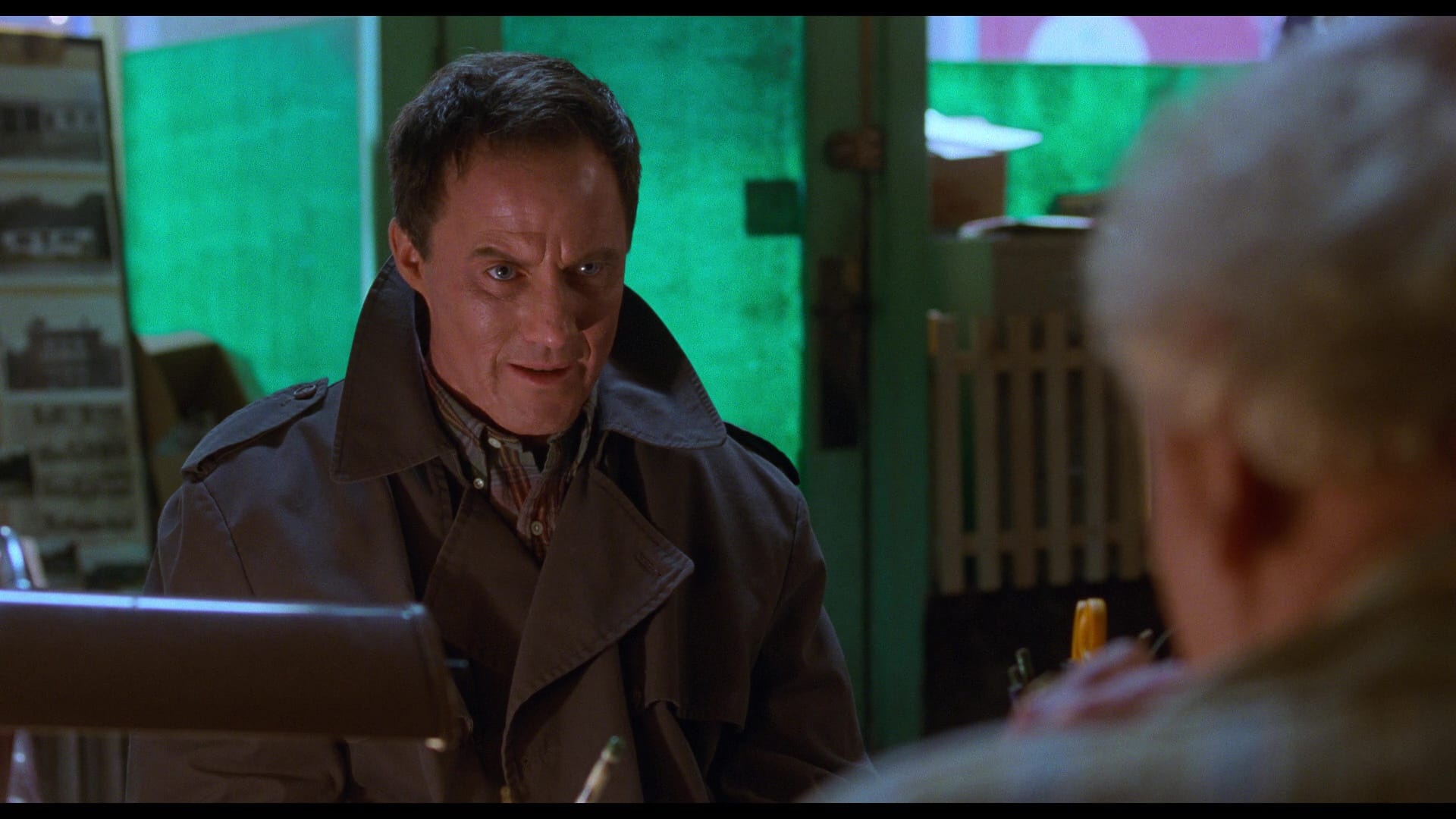
But once he’s slimmed down to a more recognizable version of himself, Burke can let loose, playing Billy’s anger, confusion, resentment and growing paranoia in outsized, entertaining ways. Like Drag Me to Hell a decade later, this is a movie that understands the pleasure of watching a shitty person suffer; we can assume a moral high ground and just enjoy the show.
Billy’s not exactly the worst character in the movie, but he is a lousy lawyer, and a coward willing to hide behind his privilege when responsibility comes calling. (Papa Lempke’s “white man from town” insult lands rather differently now than it did a quarter-century ago.) He may not deserve to die for a mistake, but as a wise man once said, it’s not the crime, it’s the cover-up – and watching Papa Lempke’s curse roll through Billy’s small circle of entitled asshole pals is something both King and Holland can have fun with. And they do, in different ways.
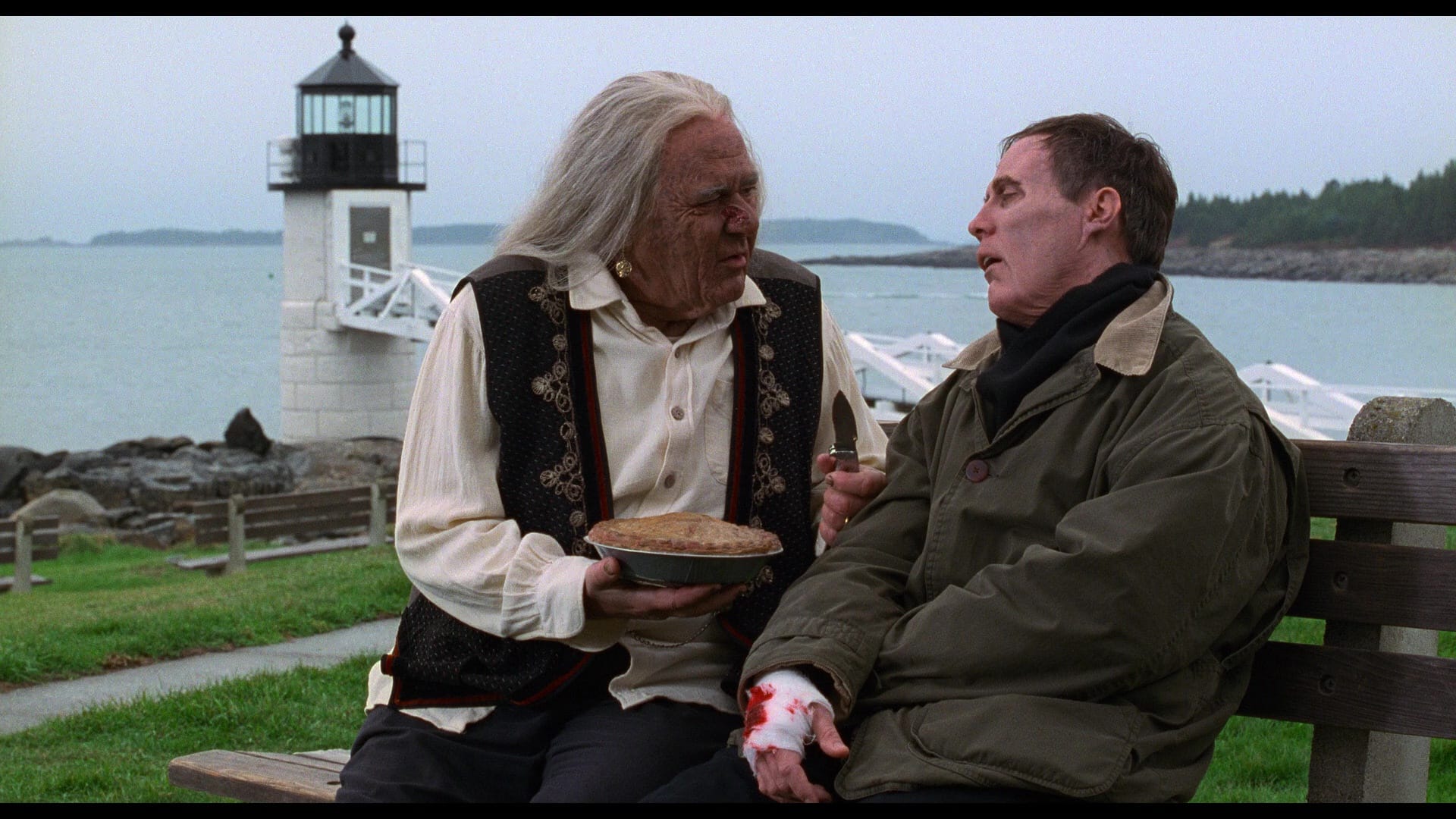
King’s book grew darker and uglier, with a truly gutting ending – if you’ve read it, you’ll surely remember its closing sentence – while Holland’s film keeps the basic beats but tweaks the tone a little, giving Billy a tiny, meaningless victory that wouldn’t have been out of place in the original Creepshow. It was the right call for this adaptation, which has a bit of an E.C. Comics vibe to begin with.
I expect someone is already pitching Amazon or Netflix on a limited series remake with CGI rather than prosthetics, and the room to treat the Lempkes as people rather than fiery-eyed, spittle-flecked stereotypes – as was the style at the time. David Harbour would be a great Billy, by the way.
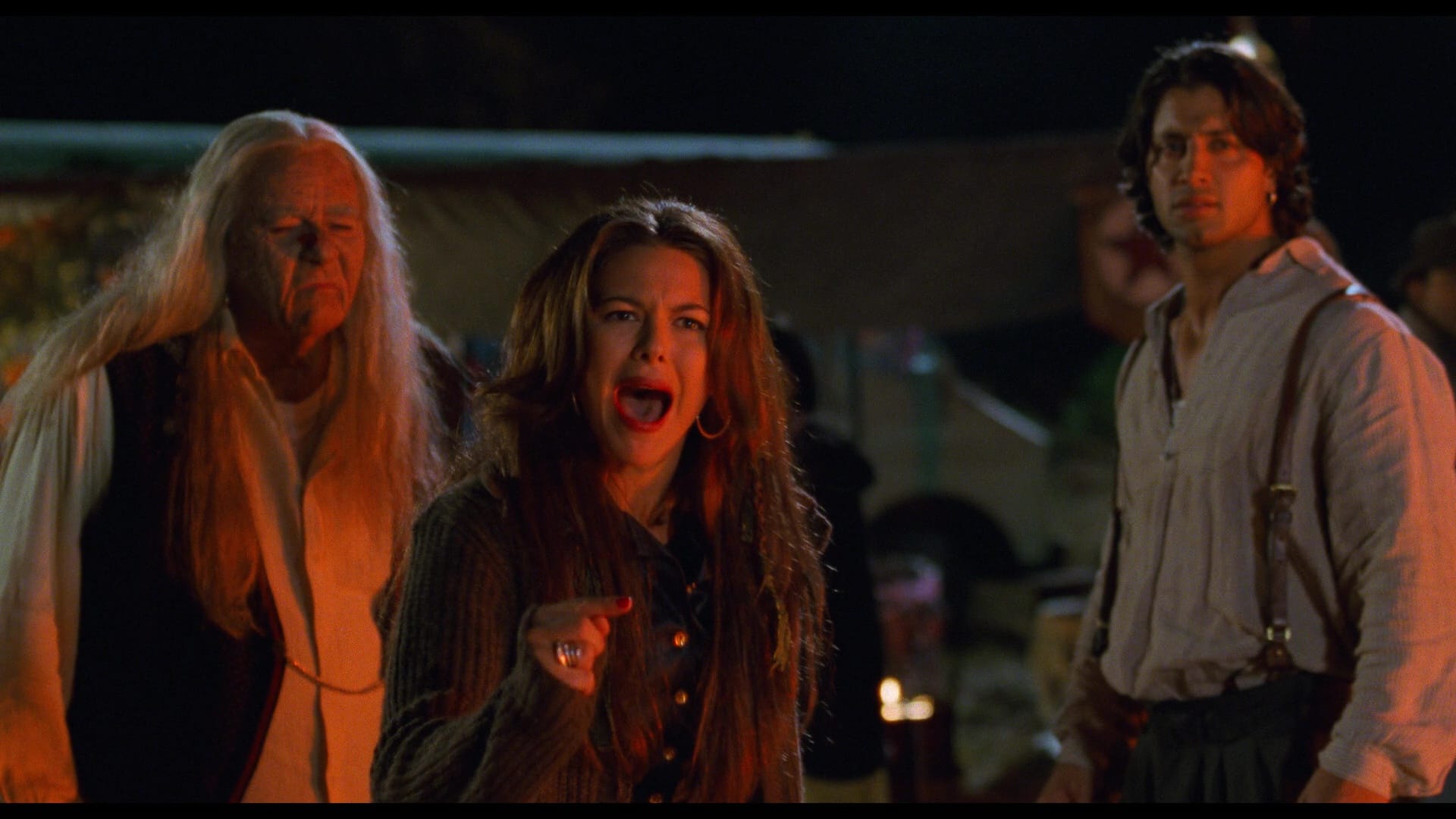
Shout’s Thinner Blu-ray, released under the Scream Factory banner, offers a bright, clean presentation of the feature, and tops the previous Olive Films BD by piling on the extras: An archival featurette from the DVD is here along with the commentary from director Holland and co-star Joe Mantegna, whose cheerful take on Billy’s murderous mobster client remains a highlight of the picture.
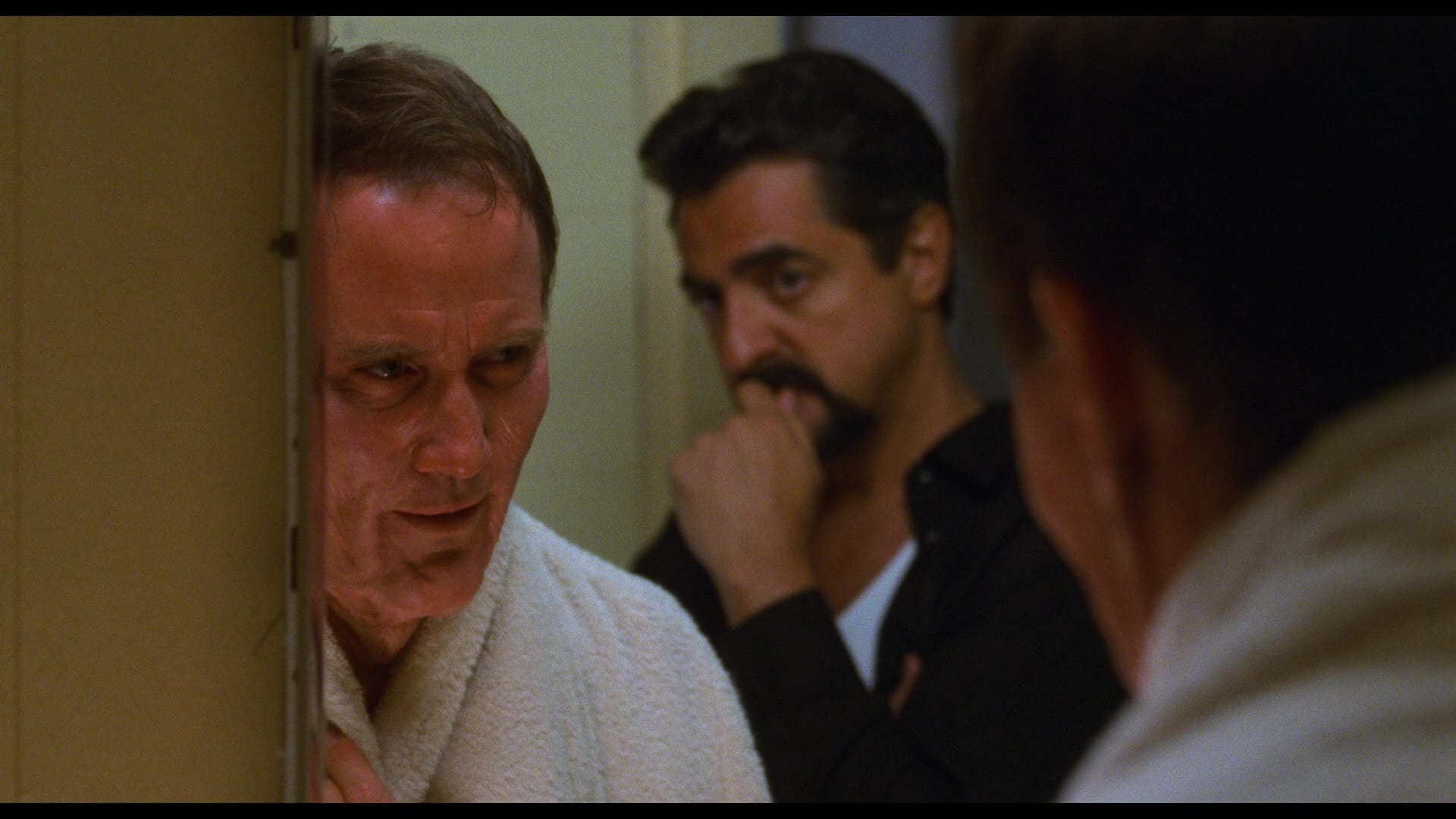
A still-chipper Mantegna returns for a new commentary with producer Mitchell Galin; writers Lee Gambin and Aaron Dries provide a more scholarly guide to the movie on a third track. The disc also offers clear-eyed conversations with director Holland, co-star Jenney and makeup effects artist Vincent Guastini, who did the day-to-day application and maintenance of Burke’s makeup – and explains why it looks the way it does.
Sadly, David Cronenberg did not participate in Shout’s Dead Zone supplements – and can I just say it’s a shame he doesn’t do commentaries anymore? The label has built a terrific package around the film just the same.
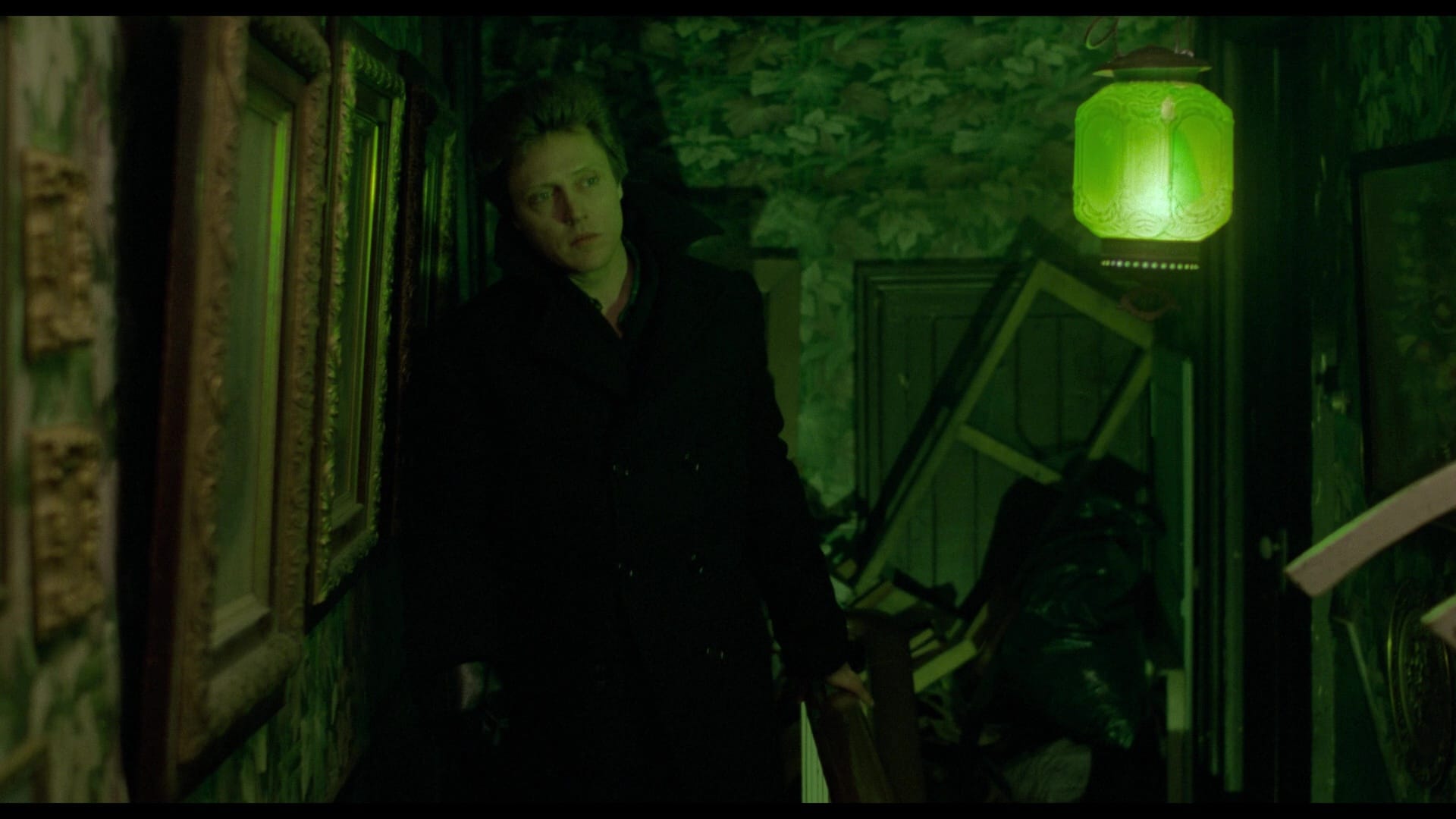
You might recognize most of it from Shout’s prior Dead Zone Blu-ray, released in 2021: Audio commentary from DP Mark Irwin, a second from writer Michael Gingold, a third from authors Steve Haberman and Constantine Nasr and a fourth with Daniel Schweiger discussing Michael Kamen’s score; new interviews with Brooke Adams, production manager John Eckert and associate producer Jeffrey Chernov, trailers, TV spots, a still gallery and a suite of archival featurettes produced for Paramount’s special-edition DVD in 2006.
But that’s not all! Shout has also commissioned a new fifth commentary in which Eric Vespe and Scott Wampler of The Kingcast sit down with director Mike Flanagan to go through the movie as particularly knowledgeable fans. It’s basically a podcast in itself, and it’s terrific.
Even better, though, is the real reason you’ll be upgrading: A pristine new 4K restoration that looks like a fresh print. Darkness is essential to this movie, literally as well as tonally, and this new transfer, mastered from the original camera negative and expertly graded in HDR, captures its shadows with beautiful depth and clarity. Johnny’s pea coat has a weight that’s been missing for thirty years; the police cruiser lighting that tunnel for Johnny, Sheriff Bannerman and that other guy in Castle Rock now seems inadequate against the darkness around them.
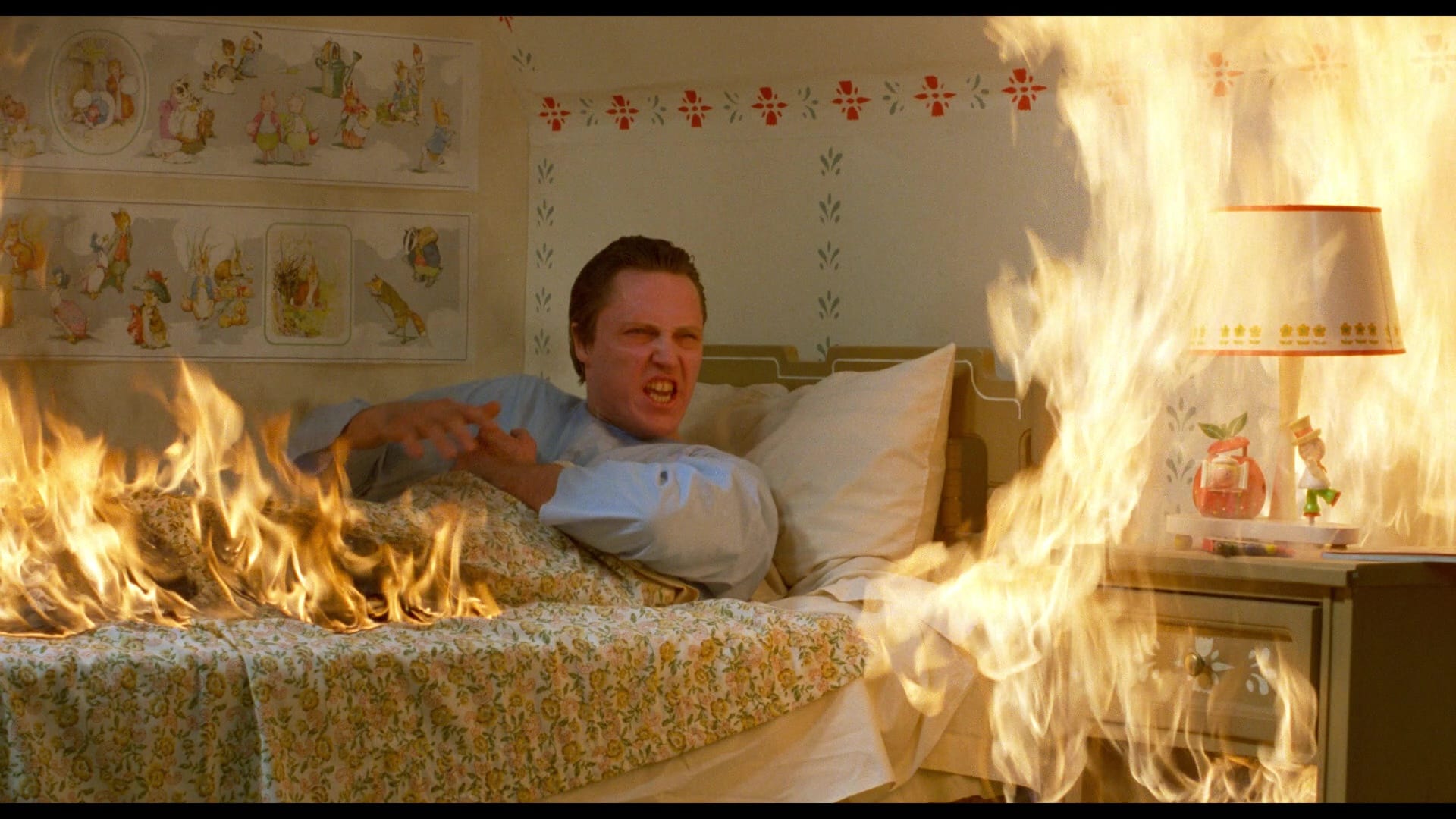
The visions of Stillson’s future – both versions – have a stark blackness closing in around the frame, and when a bright light source presents itself – as in the still-striking moment of Johnny finding himself in a burning house with a little girl – it’s rendered with shocking intensity. The lush strings of Kamen’s score, alternately mournful and piercing, are similarly immediate in your choice of 5.1 and 2.0 DTS-MA soundtracks; dialogue and the occasional gunshot are always crystal clear, Herbert Lom’s gravelly baritone especially so. The Dead Zone feels like it catches the best of everyone, and this edition catches the film at the level it’s always deserved. Just go get it.
The Dead Zone is available now in a 4K/Blu-ray combo from Shout! Studios. Thinner is available on Blu-ray next Tuesday, January 23rd.
In this weekend’s paid edition: An obsessed cop pursues a relentless killer with a very specific victim profile. Which movie am I talking about? Upgrade that subscription and find out!
